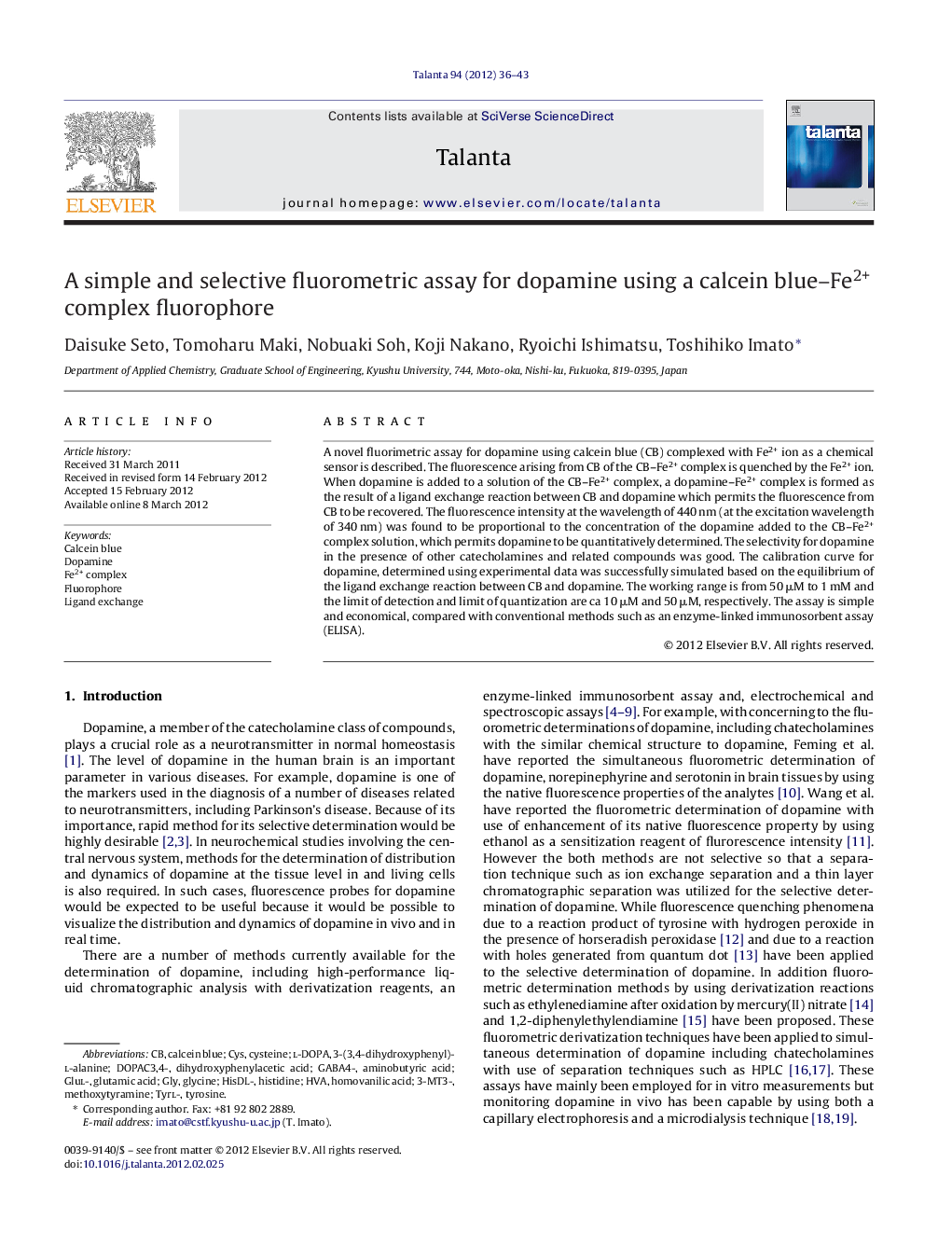| Article ID | Journal | Published Year | Pages | File Type |
|---|---|---|---|---|
| 1245611 | Talanta | 2012 | 8 Pages |
A novel fluorimetric assay for dopamine using calcein blue (CB) complexed with Fe2+ ion as a chemical sensor is described. The fluorescence arising from CB of the CB–Fe2+ complex is quenched by the Fe2+ ion. When dopamine is added to a solution of the CB–Fe2+ complex, a dopamine–Fe2+ complex is formed as the result of a ligand exchange reaction between CB and dopamine which permits the fluorescence from CB to be recovered. The fluorescence intensity at the wavelength of 440 nm (at the excitation wavelength of 340 nm) was found to be proportional to the concentration of the dopamine added to the CB–Fe2+ complex solution, which permits dopamine to be quantitatively determined. The selectivity for dopamine in the presence of other catecholamines and related compounds was good. The calibration curve for dopamine, determined using experimental data was successfully simulated based on the equilibrium of the ligand exchange reaction between CB and dopamine. The working range is from 50 μM to 1 mM and the limit of detection and limit of quantization are ca 10 μM and 50 μM, respectively. The assay is simple and economical, compared with conventional methods such as an enzyme-linked immunosorbent assay (ELISA).
► A fluorimetric determination of dopamine using calcein blue (CB) complexed with Fe2+ ion based on ligand exchange mechanism is the first report. ► The method is simple just mixed the CB–Fe2+ complex solution with a dopamine solution. ► The method is with good selectivity to dopamine.
